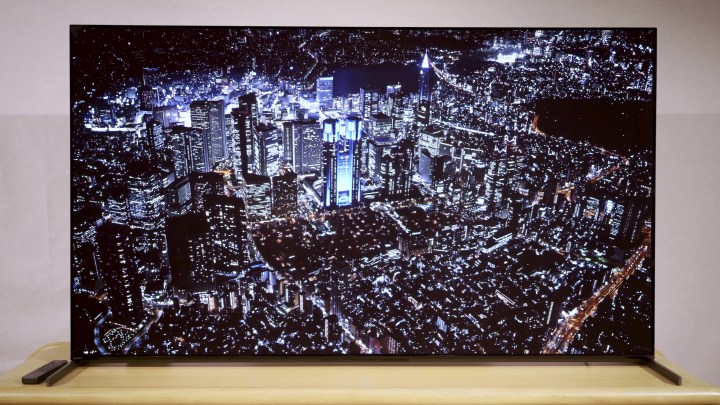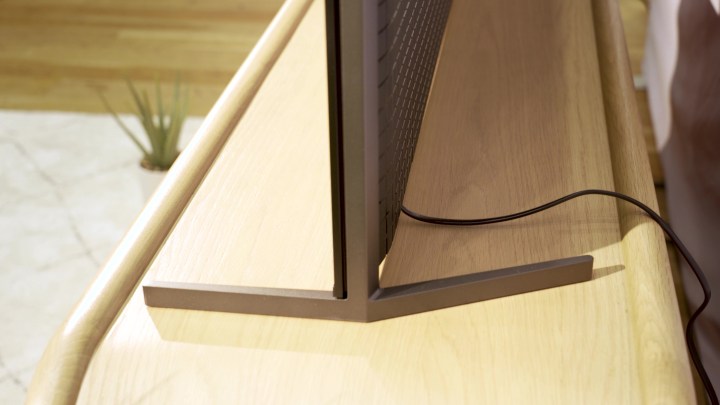After a rather conspicuous no-show at CES 2023, Sony TVs are finally here. Was it worth the wait? Absolutely. There are a few changes and a few surprises, so let’s get into it.
The OLEDs

Sony Bravia XR A95L QD-OLED TV
I recently flew to New York to get my eyes on three of Sony’s new models in person, and I’ll dive deeper into those further down. But first I want to give an overview of the whole lineup. Starting at the very top, we have the A95L QD-OLED TV. This replaces the A95K from 2022 — and yes, it uses Samsung Display’s newer, more efficient QD-OLED panel with higher brightness capability. I could not measure the TV, and Sony never talks metrics — like, ever — but I do have some brightness comments coming later in this article.
Bottom line: I think the A95L has the chops to be the best TV of the year. It has to beat out Samsung’s S95C OLED and LG’s G3 OLED, but I think it just might.
Sony Bravia XR A90K OLED TV (2022)
Next down the line is the A90K, a holdover from 2022. It’s still a Master Series, still with just the two smaller 42- and 48-inch sizes available, and still kind of a weird series choice by Sony, but I digress. It’s holding over from last year and it’s a stellar-looking TV model.
Sony Bravia XR A80L OLED TV
Finally, we have the all-new A80L, replacing the A80K from last year. What TV enthusiasts will want to know is that this TV does NOT use the new LG Display Meta — or MLA — OLED panel. And I didn’t expect it to. MLA is premium-tier OLED. And while that works for LG and Panasonic, it doesn’t work for Sony, which is all about QD-OLED for its premium tier. At least for now.
Sony did say it was looking at MLA with interest, but the A80L is positioned in Sony’s product line more like the C3 is within LG’s lineup, so it makes sense it wouldn’t get an MLA screen. We’ll have more details on this TV below because they are shared with most of the other TVs as well.
That’s the OLED lineup. Two new models and one carryover. Next, let’s talk about the LED/LCD lineup.
LED/LCD models
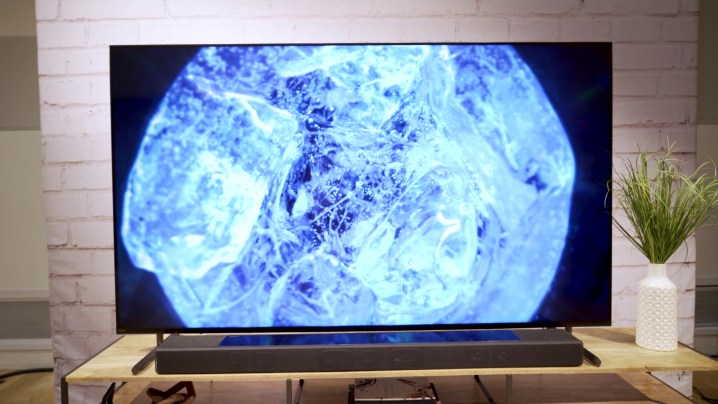
Sony Bravia XR X95L mini-LED TV
We’ll start with the new X95L — which sounds like it might be a replacement for the X95K from last year: It. Is. Not. This is an all-new TV tier from Sony that is like the God-tier 4K mini-LED sets. More dimming zones, more powerful backlight, and a few other bonuses I’ll mention later.
I was not expecting this. Nor the next model I have to tell you about.
Sony Bravia XR X93L mini-LED TV
That would be the new X93L. Now, this is a weird one. The new model number here sounds like a new TV tier, but it isn’t. It’s the replacement for the X95K from 2022. In fact, it looks exactly like the X95K. I can’t see much of a difference at all in terms of design and specs. So, we’ll have to see if there’s something I’m missing, but this sounds like a carryover from last year with a new model number. It’s possible it is existing hardware with new software for the X93L. But the X95L is really the new hotness, with new hardware and software.
Sony Bravia XR X90L LED TV
Below that we have the X90L — and this one is especially exciting because this is Sony’s bread-and-butter TV. This is the biggest value proposition Sony has because it is the least expensive, but still ultra-premium TV. And, folks, it looks better than ever.
Beyond that, Sony still offers some more affordable LED TV options, including the X85K and X80K holding over from 2022, and the new X77L.
Bravia gets new features
Before I comment on the three TVs I got to experience while in New York, I want to go over a few new features Sony has rolled out across the Bravia line.
The one that I think will get the most attention is Sony’s new gaming dashboard. It’s like Sony’s teams in Japan got the memo that Sony TVs were taking some heat in North America for not being as gaming-friendly as they should be considering Sony also makes the PlayStation 5. Well, this gaming dashboard is an interesting step in the right direction. You can adjust black levels, turn on variable refresh rate, or turn it off to get black frame insertion of backlight manipulation for smoother fast-motion resolution. You can also add crosshairs to any game, with multiple crosshair options done at the TV level, which is kind of interesting.
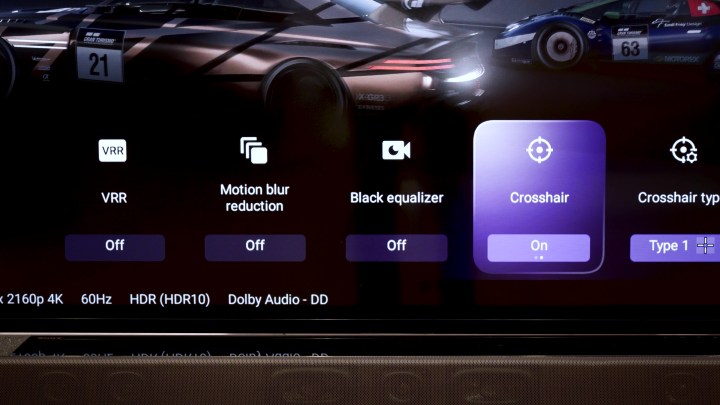
But one super-interesting change is that you can adjust the screen size down to something smaller if you want to get in tight with the TV and compete in first-person shooter games. This does change the resolution, but it will match up with the screen size. I look forward to playing with this more.
Another compelling addition is the new Bravia Clear Picture processing. I’ll dig into this more in the forthcoming full TV reviews, but think of it as a detector of poorly upconverted 4K signals.
So, say your disc player, AV receiver, or Nvidia Shield is doing the upscaling to 4K. Ideally, they wouldn’t, because the processing in premium TVs like these is almost always going to be orders of magnitude better. But for those who don’t know to turn it off, this new processing will detect that the OG signal was not 4K and apply some extra cleanup to the signal for a better picture. How well does it work? We’ll have to see. But I think it is a cool idea, in theory.
Sony is coming in strong on features this year.
There are a ton of other features I won’t get into now — we’ll save those for the reviews, but suffice it to say that Sony is coming in strong on features this year, and it will be fun to dive into those as we go through all these new TVs. And I’m just gonna sneak this in here now and prepare myself for the comments: two full bandwidth 48 gigabits-per-second HDMI 2.1 ports, and, yeah, I think one of them is the eARC port. Don’t shoot the messenger. But if you do want my take on this, check out my article on that very topic, if you haven’t already.
But now, let’s home in on the three TVs I got to dig a little deeper with. I did NOT get to measure these TVs. I just got to look at them and shoot video of them, which you can see above.
Sony A95L QD-OLED TV first impressions
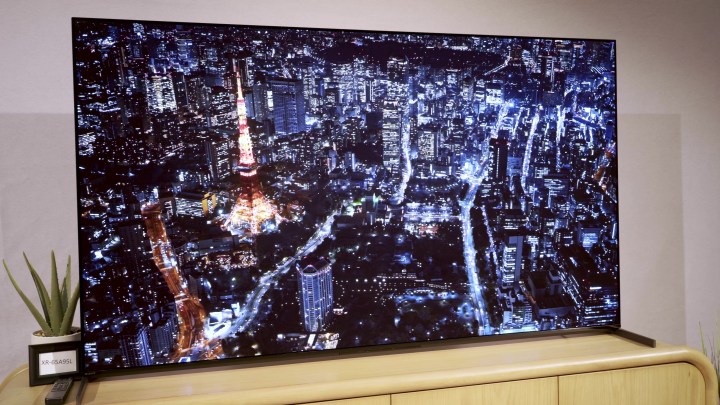
Starting with the A95L, I can tell you that I am already a big fan of Sony’s implementation of Samsung Display’s new, brighter, more efficient QD-OLED panel. Now, because it is Sony, all of the TVs I’m talking about here have been designed to reproduce as closely as possible what you would see on a Sony BVM reference monitor. In fact, in the private demo, Sony had a BVM -HX310 showing the same content that was up on the TVs, and they all matched up very well indeed, specifically in the areas of bright details and shadow details.
You can turn off Sony’s gradation-preferred setting, which preserves brightness detail and shadow detail above all else, or switch to “brightness preferred,” which sacrifices some details to get the most punchy highlights. You can move to a Standard or Dynamic picture mode, which cools down the color temperature for even higher perceived brightness, but one principle Sony will not budge on is recreating on its TVs what content creators intended to be seen. And Sony continues to do a great job with that.
The A95L is the best example I’ve seen yet of an OLED-based TV tearing it up in the brightness department. Granted, we haven’t really dug deep on LG’s G3 OLED yet, but I think the A95L will go toe-to-toe with both Samsung’s S95C and LG’s G3 in the Average Picture Level brightness department. The days of “but it isn’t a great bright room TV” commentary are coming to an end, starting with TVs like the A95L. I think that is super exciting.
I’m going to predict right now that the A95L will be the video geeks’ choice for 2023. If history has anything to say about it, the A95L is the TV to beat this year from a pure performance perspective. It might be the closest to perfection we’ve seen yet. I don’t know, but I can’t wait to find out!
Another feature worth noting is that it has a more conventional stand. The 77-inch has four options — flush to whatever it sits on or raised for a soundbar, with the legs placed either at the extreme ends or closer in toward the middle for use on smaller entertainment stands. The 55- and 65-inch models still let you go for flush or soundbar-friendly, but the legs only install at the far ends of the TV.
Sony X95L LCD TV first impressions
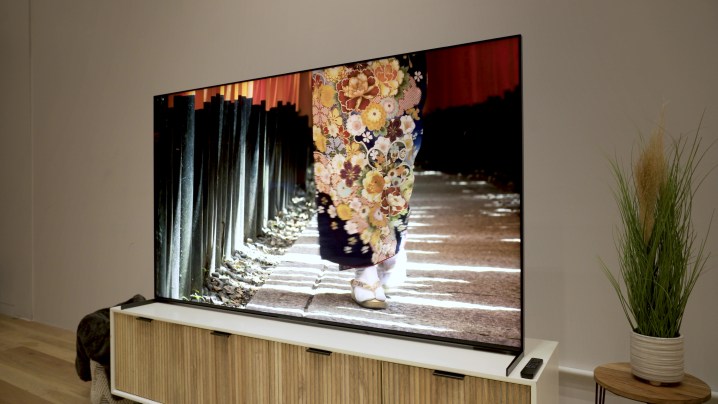
Next up is the X95L, and I honestly think this is as close to a Z-Series TV as one of Sony’s X-series 4K TVs has gotten. It looks bright, punchy, and rich — it clearly has more local dimming zones paired with Sony’s already advanced backlight tech. This thing is going to cost a small mint, but it will probably still be less than the Z9K 8K mini-LED TV that carries over from 2022. I can’t wait to line this TV up against the Samsung QN95B — I think that is going to be one heck of a TV battle. It may be the most exciting one this year, and I can’t wait to put them head-to-head.
Sony X90L LCD TV first impressions
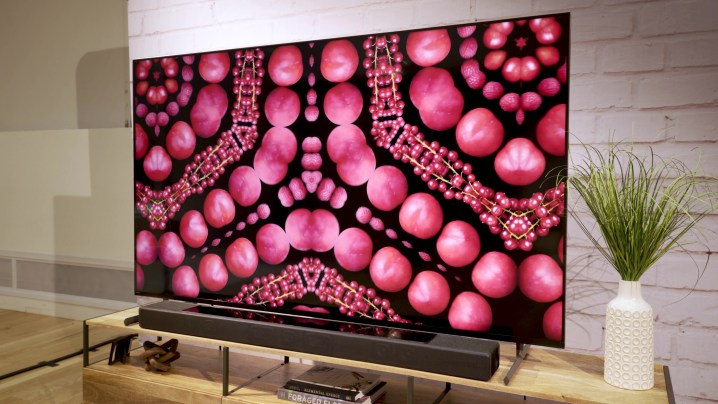
And, finally, let’s talk about the X90L. As a reminder, Sony doesn’t talk about how many local dimming zones it uses or how many mini-LED backlights it packs into any of its sets — it never has and I doubt it ever will. But Sony did tell me it has significantly increased the number of zones for the X90L, so I will be counting them on this one, much to my chagrin. Anyway, the blooming and halo issues on this TV have been significantly mitigated — or at least it looked that way based on what I was able to see — and Sony had some pretty challenging HDR content playing, so I feel like I got a good look.
That seems big to me because the backlight glow was the chief complaint about the X90K and X90J predecessors. The X90L looks significantly better, and might just be the highest value in terms of high-performance TVs we see this year. We will definitely know soon.
I think this is going to be one of Sony’s strongest years in what is clearly one of the most exciting years for TVs we’ve had in some time.
